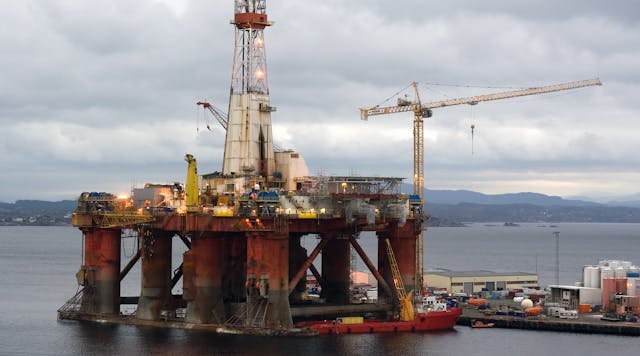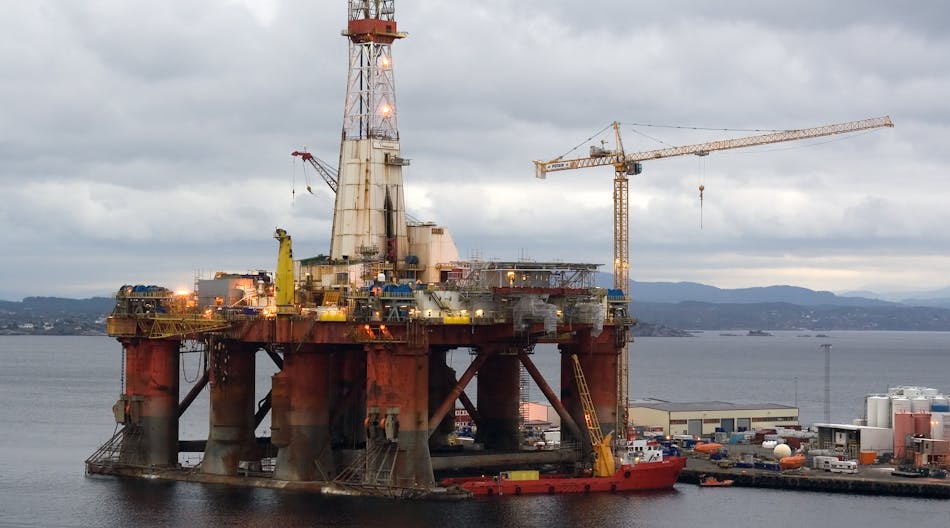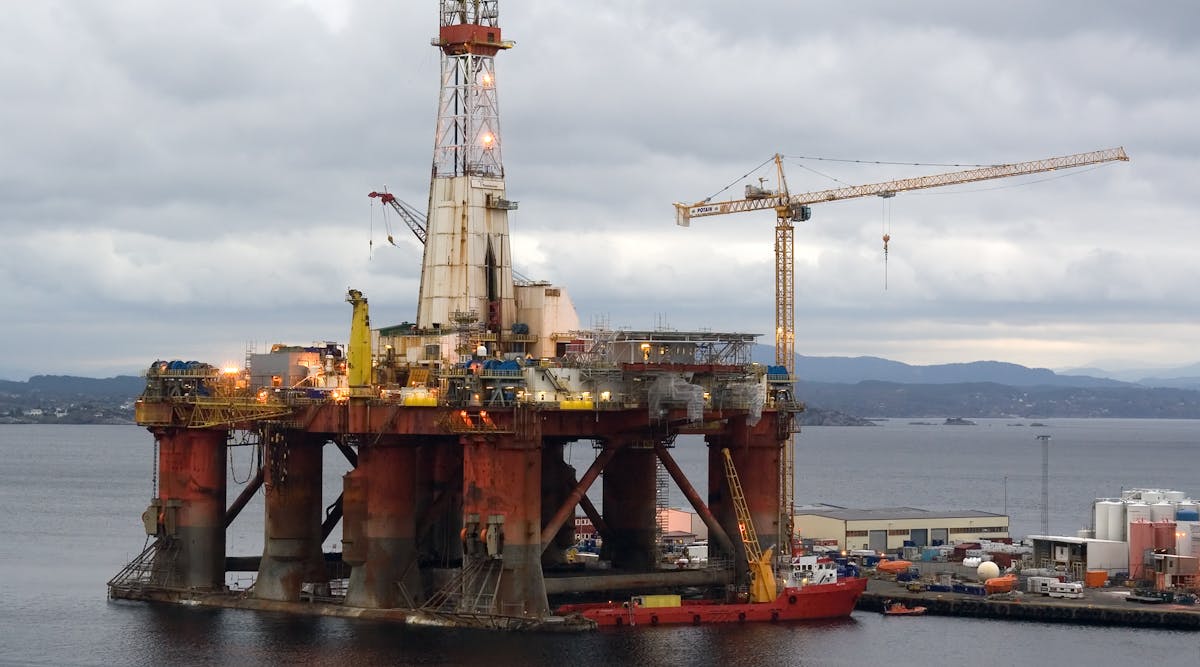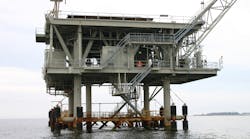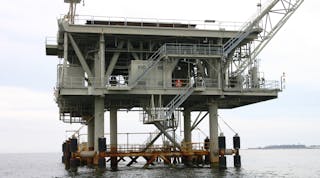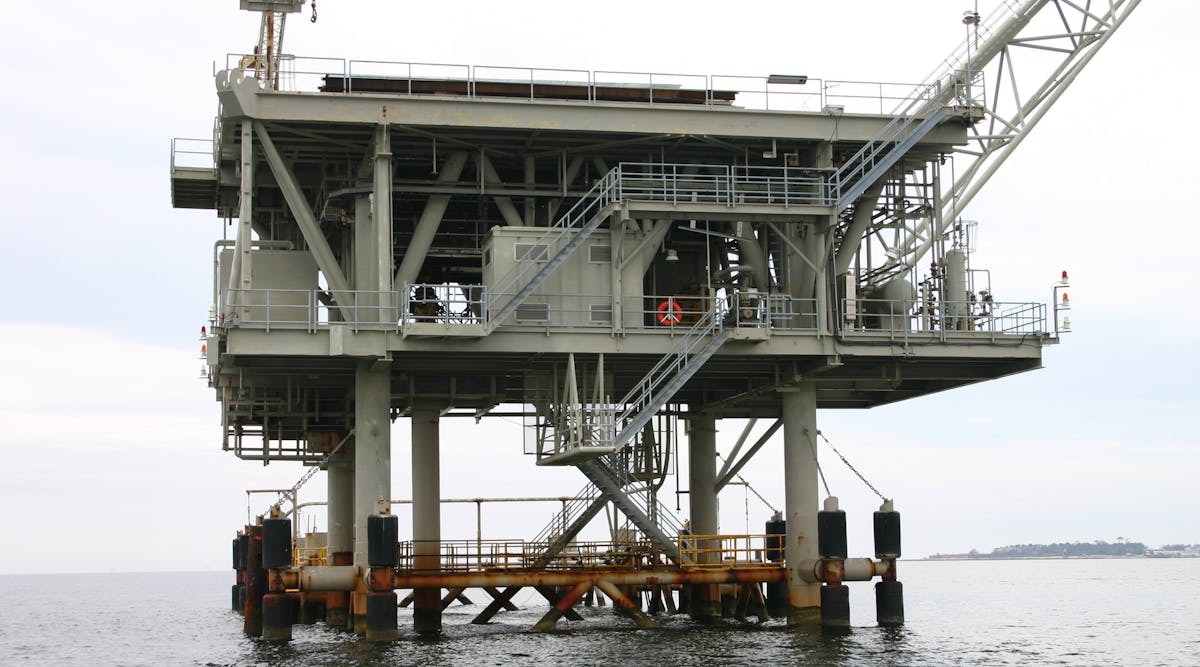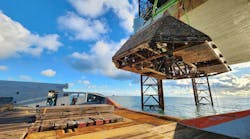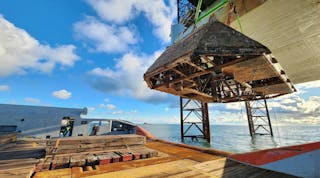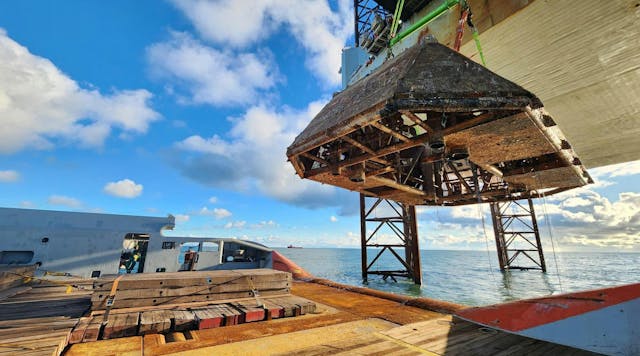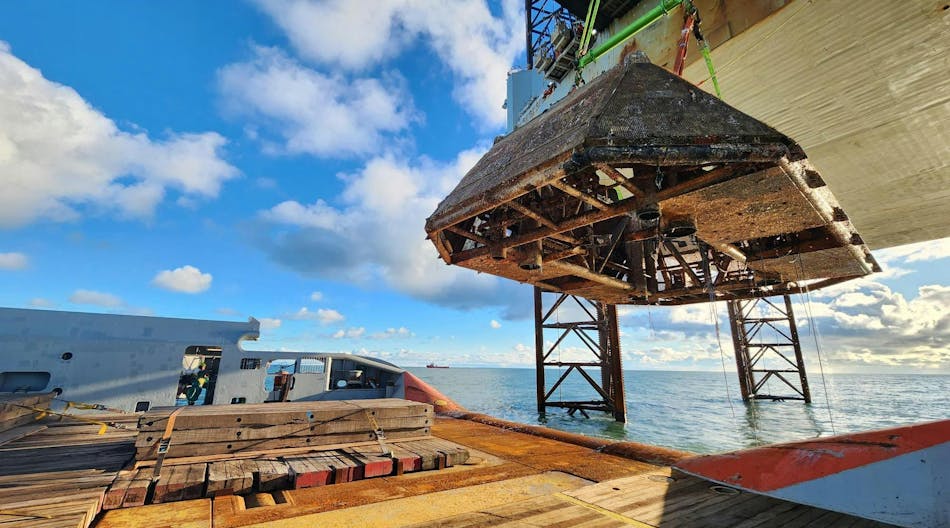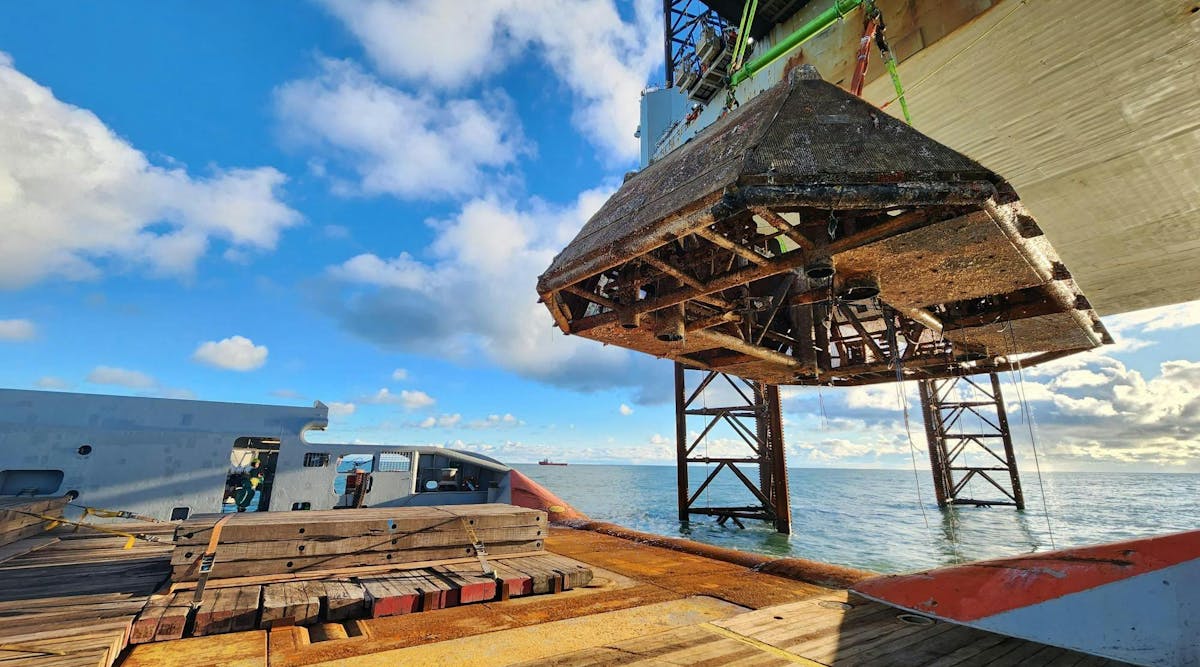编者注:本文首次发表于《Offshore》杂志 2023 年 9 月/10 月号。 单击此处查看完整问题。
作者:Mark J. Kaiser,路易斯安那州立大学
自 2016 年以来,安全与环境执法局 (BSEE) 收集了美国外大陆架运营商的退役支出数据,以估算租赁的退役责任。迄今为止,BSEE 或文献中尚未报告基于 BSEE 数据的汇总统计数据或信息。
该系列由四部分组成,旨在评估美国墨西哥湾深水区(定义为水深大于 122 m(400 英尺))主要退役阶段的 BSEE 成本估算,并推断单位成本统计数据和成本函数该区域。
在第 1 部分中,我们回顾了墨西哥湾深水生产和退役活动,并表明 2022 年退役市场的价值约为 243 亿美元。井和建筑物是最重要的成本类别,其次是管道。
本系列的后续部分将更详细地研究油井堵塞和废弃、结构拆除以及管道退役成本估算。
深水开发理念
深水开发中使用了许多不同类型的结构。固定平台和顺应塔具有延伸至整个水柱的导管架,Bullwinkle(固定平台)水深可达 1,353 英尺(413 m),Petronius(顺应塔)水深可达 1,754 英尺(535 m),这是两个最深的固定平台世界上有许多平台,而浮动结构则使用有浮力的船体,并使用筋腱和锚索固定在某个位置。
深水开发中使用的浮动平台主要有四大类——浮式生产储卸油船(FPSO)、半潜式平台(半潜式平台)、张力腿平台(TLP)和Spar结构——所有这些都在墨西哥湾使用。每种浮式平台都有不同的类别和尺寸,还有一些混合型浮式平台,例如不在船上储存石油的移动式海上生产装置 (MOPU) 和深吃水浮式平台。
2022年,美国墨西哥湾水深超过122 m(400 ft)的固定平台和两座合规塔架共有45座,浮式结构有47座:18座立柱、14座TLP、9座半潜式平台、3座迷你张力腿平台( MTLP)、一艘 MOPU 和两艘 FPSO。所有生产建筑物主要是石油生产商,这意味着它们的大部分生产流是液态烃(原油和凝析油),并且除了起辅助作用(即交通枢纽)作用的固定平台外,所有建筑物都在生产。
2022 年美国墨西哥湾已完工的深水井中,一半以上位于海底。在深水中,海底井主要采用浮动结构,并且一些浮动结构根本不允许使用干树井(例如FPSO)。大多数深水固定平台,包括顺应塔,都使用干树井,但随着生产在更深水域的发展,其中许多结构也用作湿井回接的宿主。
生产数据
从1947年到2021年,美国墨西哥湾生产了231亿桶(Bbbl)石油和190万亿立方英尺(Tcf)天然气,即约550亿桶油当量(Bboe)。
天然气产量长期处于下降曲线,2021 年产量降至 0.5 Tcf 以下,上次出现在 1960 年代初的水平,而石油产量仍处于过山车状态。
2010 年深水地平线悲剧之后,由于钻探暂停和允许延误,石油产量下降了几年,然后在 2015 年反弹并达到 7 亿桶 (MMbbl) 的新峰值。2020-21 年,新冠疫情大流行这是对该系统的另一次冲击,由于停产和劳动力问题,产量急剧下降至峰值的一半左右。
深水湾于 1977 年开始生产,到 2021 年,其石油产量占美国墨西哥湾产量的 47%,天然气产量占 16%,即约 10.8 桶石油和 30 Tcf 天然气。
2021年,深水湾生产了358兆桶石油和3850亿立方英尺(Bcf)天然气,占该地区石油产量的94%和天然气产量的77%。过去几年,新冠肺炎相关影响显着,但该地区预计将完全恢复并超过大流行前的水平。
从历史上看,墨西哥湾的深水发现一直是含油的。20 世纪 90 年代曾开发过一些大型气田,但大多数都已开采较早,深水天然气产量在 2003 年达到峰值,约为 1.6 Tcf。如今,大多数深水天然气生产都与油田有关,在现场用于公用设施和工艺操作后,其余部分被输送到陆上。
浅水下降是天然气产量急剧下降的主要原因。未来,如果浅水天然气产量继续下降,天然气产量将主要受深水石油开发和伴生气生产控制。低于历史水平的天然气水平可能会成为新常态,肯定低于 1 Tcf/年,并且可能低于 500 Bcf/年。
目前,美国墨西哥湾生产的大部分石油和天然气均来自深水石油生产。预计这两种趋势将持续下去。
退役趋势
自 1978 年以来,在美国墨西哥湾水深超过 122 m(400 ft)的地区,总共安装了 67 个固定平台,拆除了 22 个,留下了 45 个固定平台的活跃(生产)库存。2022 年。
墨西哥湾已安装了三座符合标准的塔(Lena,1000 英尺;Baldpate,1648 英尺和 Petronius,1754 英尺)。2020年,莉娜号退役。
第一个漂浮结构于 1983 年安装,自那时以来,总共安装了 58 个漂浮物,并拆除了 8 个漂浮物,留下了 50 个活跃的漂浮物。2022 年。最近,Independence Hub semi 于 2019 年拆除,MTLP Morpeth 于 2021 年退役。
从井来看,自1966年以来,深水共开钻井7181口,永久废弃井约3929口,暂时废弃井991口,活跃库存井2271口。2022 年。在这 2,271 口井中,约三分之一目前正在生产(约 2022 年有 767 口生产井)。
2016年至2021年,401-1,000英尺水深共有83口井永久废弃,水深>1,000英尺永久废弃井417口。
在整个墨西哥湾浅水区,废弃井活动超过开井活动约 6:1,表明 <400 英尺水深的成熟性质及其产量下降,而在 > 1,000 英尺的水深中开挖井多于堵塞井(546桩与 417 堵塞),表明深水的持续预期性质。市场规模
到 2022 年,美国墨西哥湾深水退役市场估计约为 243 亿美元。
油井废弃几乎占市场的五分之四(189 亿美元),其次是结构拆除作业(31 亿美元),约占市场总规模的 10%。油井和建筑物合计占估计市场的 90% 以上(220 亿美元)。
管道退役几乎占总成本的 10%,而场地清理则占总成本的不到 1%。
大部分弃井成本来自与浮体相关的湿井,只有约 10% 的总成本来自固定平台。就结构退役而言,浮标约占总成本的四分之三。



























